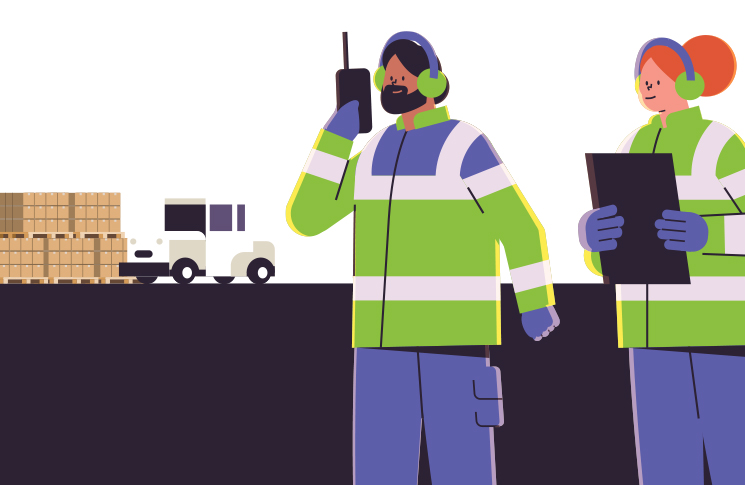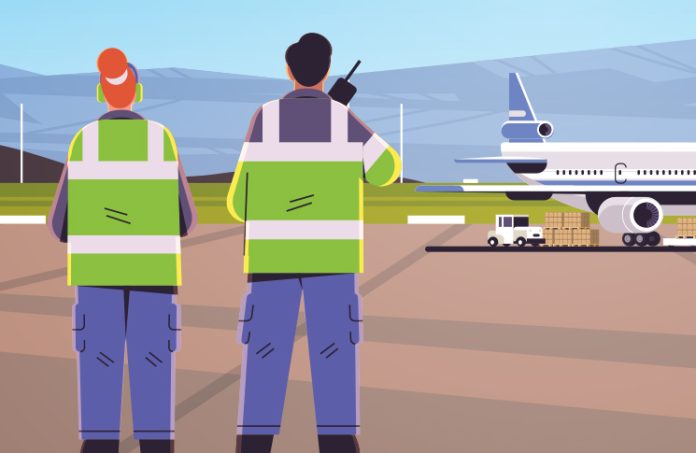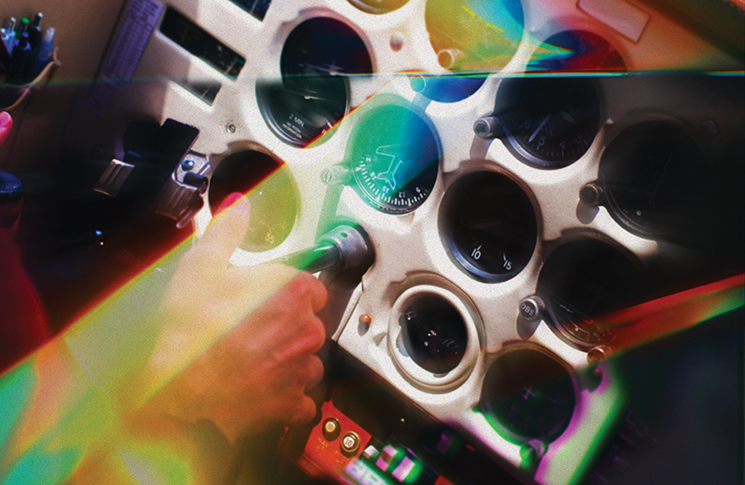Ground handling, an often-overlooked corner of aviation safety, is facing post-COVID-19 challenges.
Ask a military or general aviation pilot how an aircraft flies and your answer is likely to involve lift, mass, thrust and drag. But ask an airline executive the same question and you may well hear about turnaround schedules, ramp services, catering, provisioning and field operations.
Without ground handling, air transport cannot take off. The time-pressed, strenuous, repetitive and potentially dangerous tasks of ground handling are an extensive but often unacknowledged part of aviation.
CASA says ground operations cover all ground-based functions other than engineering. This includes:
- passenger handling
- aircraft marshalling
- loading and unloading
- catering and provisioning
- cleaning and cabin inspection
- freight handling
- connecting ground power units
- driving and positioning ground
- support equipment (GSE)
- refilling potable water
- servicing aircraft toilets
- aircraft fuelling
- push back and/or tow of aircraft.
Such a flurry of activity presents many opportunities for accidents and incidents. The work is carried out in all weather, often at night, at height and in a noisy, busy environment.
A 2005 survey by the Flight Safety Foundation found an extraordinarily high accident rate in ground handling. It concluded that 27,000 ramp accidents and incidents – one per 1,000 departures – occurred worldwide every year.
A 2016 study by US aviation consultancy VanAllen Group found ground events were 800 times more likely to occur than any other kind of accident and happened on average once every 4,000 hours. Half of these incidents were described as ‘hangar rash’ about a third happened during towing and the remainder consisted of ground vehicle collisions and taxiing incidents.
Recent figures are no more encouraging: A 2019 Malaysian study found ‘an increase of 28 per cent ground accident occurrences at Malaysia’s airports and STOLports over the last 5 years’.
Ground handling accidents
Some high-profile ground handling accidents include:
- On 23 April 2005 a Boeing 737-800 aborted take-off after a low-speed (pre-rotation) tail strike at Stuttgart airport, Germany. The aircraft, which was severely damaged, had been on a multi-leg journey with 100 passengers and their baggage being offloaded in Stuttgart. The remaining 89 passengers were seated in the aft part of the cabin.
- On 7 October 2013 a fire was discovered in the rear hold of an Airbus A330 shortly after it had arrived at its parking stand at Manila Airport, Philippines. The source of the fire was found to be undeclared and unlawfully packed dangerous goods in passengers’ checked baggage.
- On 19 December 2013 a Boeing 777 ingested an empty cargo container into its left engine, destroying both the engine and the cargo container.
- An Airbus A330 was struck by lightning just after arriving at its allocated stand at Perth airport on 26 November 2014. There had been a one hour post-landing delay after ground handling operations were suspended due to an overhead thunderstorm. A worker connected to the aircraft flight deck intercom was knocked unconscious from electric shock.
- On 12 December 2021 a baggage handler at Mumbai airport, India fell asleep in the cargo hold of an Airbus A320 and was flown to Abu Dhabi in the Persian Gulf. The worker was unharmed and was flown home the next day.
- On 30 August 2022 an airport baggage handler at Louis Armstrong New Orleans International Airport was killed after their hair became caught in a conveyor belt.
- On 31 December 2022 a baggage handler was killed instantly when ingested into the left engine of an Embraer ERJ-175 at Montgomery Regional Airport, Alabama, US.
The COVID effect: non-technical factors
The view from your seat may be unchanged as your flight pulls up to the gate in 2023 but the structure of the industry that tends to your aircraft is utterly different to the way it was before the COVID-19 pandemic, industry leaders say.
The structure of the industry that tends to your aircraft is utterly different to the way it was before the COVID-19 pandemic.
Like all aspects of the industry, the ground handling sector was also decimated by COVID, which resulted in airlines having to make difficult decisions and move their ground handling to Ground Handling Service Providers. Now, with the rapid return to busy skies after the pandemic the ground handling sector has faced exponential growth, with a spike in lost baggage one of the more benign indicators of stress.
Post-COVID, ground handling is growing again, in pace with air transport. Consultancy Technavio predicts the airport handling services market size to rise by $US56 billion from 2022 to 2027, at a compound annual growth rate of 6.8 per cent.
But insiders and observers are concerned about how this can be done efficiently and safely.
From the perspective of CASA, this is where the importance of surveillance of airline operations is demonstrated. By continuing surveillance of the airlines ground operations, CASA can persist in understanding what trends and issues are arising and work with industry to overcome the identified issues.
In her June 2023 edition column editor of industry journal Ground Handling International, Samantha Payne Polepaka, says, ‘there remains a general unease in the sector whether everything will go to plan. The current labour market pressures are a real cause for concern in the ground handling community which say there are few qualified people to ensure smooth operations.’
Groundforce Portugal director Arafat Tayob told Ground Handling International, ‘Let’s not sugar coat it: we are all facing unprecedented times. Air travel demand has boosted almost to the levels of 2019 and the pandemic disruption led to the decrease of employees.’
Similar concerns emerged at CASA’s Ground Operations Safety Forum (GO-SAFE) held in Melbourne in June 2023. The forum was held under Chatham House rules but participants mentioned the same concerns as their international counterparts about training, labour force stability, and safety culture.
‘Greenness,’ or inexperience of post-COVID staff emerged as a major issue. ‘In the new world ground handling is not seen as a long-term career,’ one provider said. ‘And that means we need a different training system for a more transient work force.’
A study done by one ground services provider concluded that for the first five months of their employment ramp staff were ‘on watch’, while learning on the job. Between 6 months and 1 year, they were ‘neutral’ and by 12 months, could be considered proficient in all aspects of the job role.
One operator gave the example of a three-day course being attempted to be taught in 4 hours.
At the same time there was concern that time allocated for training had been compressed in one case. One operator gave the example of a three-day course being attempted to be taught in 4 hours by one trainer. This was quickly rectified when the airline in question re-enforced the need for all training to be conducted to the approved syllabus. Staff shortages had led to accelerated promotion, which some operators feared was pushing staff into roles they were not sufficiently experienced for. ‘Previously you would start in the bag room and be there about three years before you went out to the ramp,’ one ground handler said. ‘Now you might be on the ramp in as little as 2 weeks.’
‘The situation now makes it more difficult for front-line employees to understand why restrictions like weight-and-balance are imposed and why these things matter,’ another ground handling executive said. ‘We’re having to provide base-level coaching.’

Another operator supplied an example: when newly recruited ground handling staff had been told smartphones were banned on the ramp, several turned up the following day with newly bought smartwatches (which do many of the things a smartphone does, including distract).
There was consensus that COVID’s disruption of the ground handling workforce was a management and efficiency issue that had the potential to become a safety issue if not swiftly and intelligently addressed.
Virtual and mixed reality training were seen as having potential to complement on-the-job learning. One participant argued that a largely new workforce was an opportunity for safety conscious ground handling operators to develop an open reporting culture. All the participants in the room agreed that one of the positives with the current state of the industry was the increased level of reporting.
International operators described with wistful envy how ground handling teams in Asian countries including Japan and Indonesia saw themselves as disciplined and vital squads, who took pride in working briskly and gathered to salute the departing aircraft after its turnaround with waves and bows. There was a lively discussion about how to create an Australian version of this esprit de corps.
One of the positives with the current state of the industry was the increased level of reporting.
After 2 days of discussion and analysis, CASA senior Inspector Ground Operations Andrew McKernon summed up. He said having issues emerge in a meeting was much preferrable to seeing them emerge as incidents or accidents. ‘The ground handling sector, like the rest of aviation, is still facing some tough challenges due to COVID,’ he said, ‘However, there remains a group of very talented and committed professionals whose job is to ensure that every possible opportunity is taken to ensure the safety of the travelling public’.





